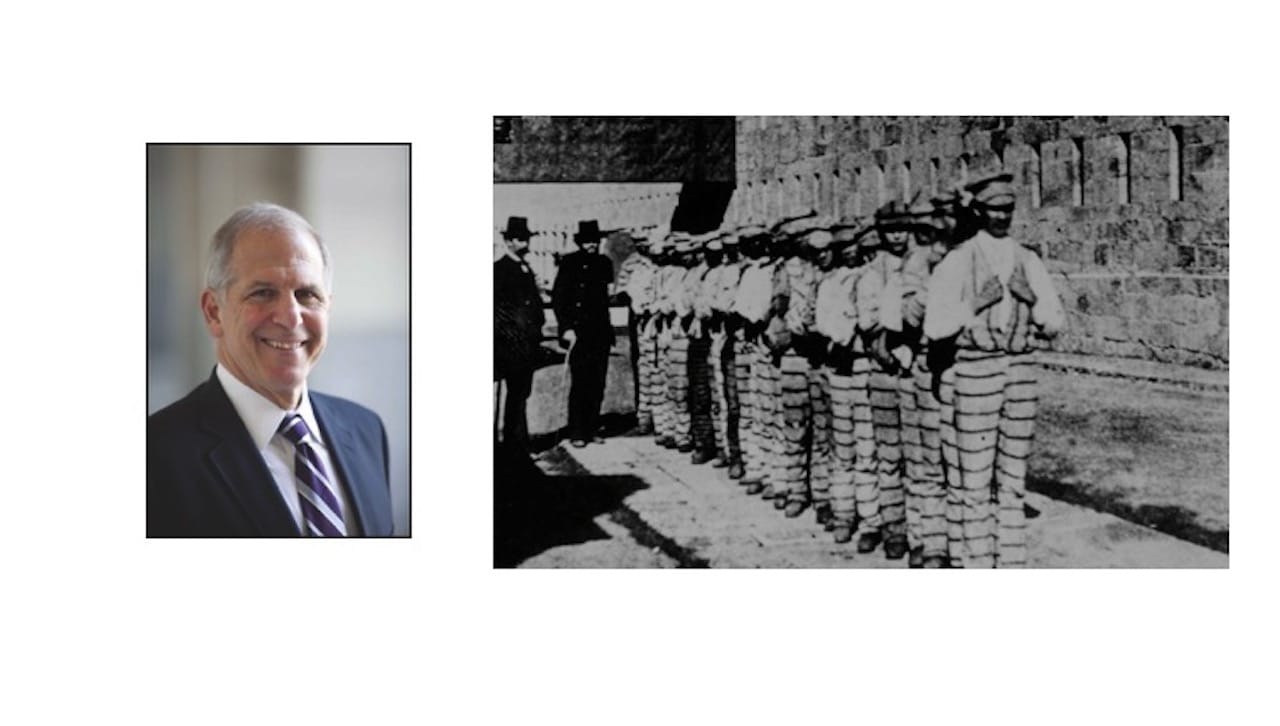Plans for Museum at Sing-Sing Prison Discussed

Brent Glass, Ph.D., director emeritus of the Smithsonian National Museum of American History, has advised many museums around the world. Now he wants to explore Sing Sing prison’s rich history and put it on display so the world can learn more about the famous prison, and through this, learn more about ourselves.
“History is a resource that helps us understand our own times,” Dr. Glass said at the Schemel Forum’s World Affairs Luncheon Seminar in February. “[Sing-Sing prison] is a topic both timely and timeless.”
Sing Sing Correctional Facility is a maximum-security prison located in Ossining, New York, just over an hour’s drive from New York City. Its location, “up the river” from New York City, inspired the development of the same phrase, said Dr. Glass. Its first cell block was built by convicts in 1825, using stone from a large nearby quarry. The construction of Sing Sing marked a turn in our nation’s criminal justice philosophy, as convicts were kept from the public eye in prisons more and more, instead of facing justice in the public eye via stockades or similar displays. Auburn Prison was initially chosen to house most of New York City’s prisoners, but Sing Sing took its place because it is closer.
According to Dr. Glass, the original living conditions for inmates at Sing Sing were cramped, violent, and inhumane. Cells were often just big enough to fit an adult man, and no larger. Warden Elam Lynds, with a background in naval corporal punishment, made Sing Sing famous for corporal punishment during his tenure from 1825-1830.
“There’s something very haunting about being in this place, knowing its history, knowing how 1200 men […] lived in very Spartan conditions,” Dr. Glass said of the original cellblock.
The conditions at Sing Sing were so sensational that the New York Times assigned a reporter to cover stories of violence and drama at Sing Sing each day, said Dr. Glass. Newspapers and the era’s “yellow journalism” contributed to much of the prison’s notoriety.
In 1891, the prison began executing convicts in electric chairs, which continued until 1963. The decision to start executing people caused so much controversy that the town of Sing Sing changed its name to Ossining, so as not to be identified with the practice.
Dr. Glass said several prison directors have tried to implement change over the institution’s history, such as Lucretia Mott’s descendant Thomas Mott Osborne. Change has often been met with resistance by prison employees and authorities, but reforms over the years have done away with such practices as wearing stripes and walking in lockstep, while also adding more recreation and rehabilitation programs.
Dr. Glass hopes that the museum will contribute to a conversation on change in modern prisons, and the New York State Department of Corrections approves. Of course, Dr. Glass reminded the audience, they still have a prison to run.
“They have said to us, remember, we’re not in the hospitality business the way you are,” Dr. Glass said, to laughter.
Today, Sing Sing utilizes rehabilitation programs designed to reduce convicts’ recidivism, by empowering them with skills they can use to strengthen relationships and succeed in careers after being released.
While Sing Sing’s reputation over the years has gained some notoriety and fed into sensationalism, Dr. Glass said his goal for the museum is to take Sing Sing and its history seriously. With plans to improve the local economy and revitalize the town of Ossining, the museum will make a positive impact on the lives of prisoners, victims, employees, and families. Using interactive exhibits, virtual reality, and more, the museum will examine the experiences of the prisoners, staff, and the prison’s historical significance without trivializing or sensationalizing those stories.
“All of us know someone who has been convicted or accused of a crime, and we may not realize it,” Dr. Glass said. “The prison’s mission statement is: we want to prepare the people who live here,” so that they do not come back.”
The Schemel Forum World Affairs Luncheon Seminar series is sponsored by Munley Law. For more information about the Sing Sing Prison Museum, visit www.singsingprisonmuseum.org. For more information on the Schemel Forum, please contact Sondra Myers, director of the Schemel Forum, at 570-941-4089, or at Sondra.myers@scranton.edu.







